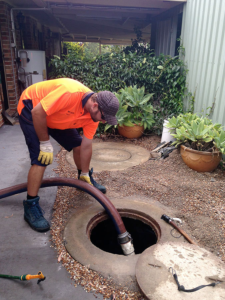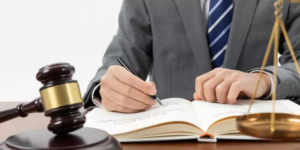Pianos are one of the most valuable and fragile items that require specialized knowledge to move. Professional piano movers use a combination of skill, technique and equipment to ensure that the instrument is properly transported and arrives in its new home in perfect condition.

Moving a large item like a piano can be difficult, especially if it has to be moved up or down stairs. Attempting to move your piano on your own can lead to serious injury or damage to the instrument. Contact Piano Movers Denver for professional help.
When hiring Piano Movers, it’s important to find a company that has experience in moving these large and heavy instruments. Look for companies with a long history of successful relocations and a team of well-trained professionals. You can also ask for references from past customers and read online reviews to learn more about a company’s reputation and services.
A professional piano mover will use specialized equipment to transport your instrument safely and securely. This includes a customized dolly that supports the weight and balance of your piano. Some companies may also provide padding and straps to secure the piano in place during transportation. This ensures that your piano is protected from damage and that it arrives at its new home in pristine condition.
Piano movers are highly trained to handle delicate and heavy items, making them the perfect choice for this type of job. They understand the importance of protecting and preserving your piano’s value, both monetary and sentimental. Additionally, they are experienced in navigating challenging situations during relocations, such as tight corners and flights of stairs. This is important, as it can prevent the need for costly repairs down the road.
In addition to their expertise and experience, Piano movers are licensed and insured, which provides protection in the event of an accident during transport. In addition, they will use a customized truck to transport your piano, ensuring that it is secured and properly ventilated. They will also take measures to protect the piano from weather elements and other hazards, such as debris on the roadways.
It’s also important to choose a Piano moving company that has a good reputation. While cost shouldn’t be the only factor to consider, a high price tag can indicate inexperience or subpar service. Additionally, look for a company that specializes in moving pianos, rather than general furniture movers. This will ensure that your piano is in good hands and that you get the best possible price for the service.
Tools
Pianos are heavy, top-heavy instruments that require special handling during transport to prevent damage. Whether the instrument is for personal use or as part of an event, it’s important to understand the intricacies of piano moving to minimize risks and ensure a smooth relocation. Professional movers have the specialized equipment and knowledge to safely and securely move your piano.
Piano movers use tools specifically designed for this delicate task, including padded piano dollies, protective covers, and straps. These tools distribute the weight evenly and reduce stress on the instrument and those moving it. They also help avoid damage to the floors and other surfaces in your home. In addition, they use a variety of tools to prepare the space for the piano’s move, such as measuring doorways, hallways, and staircases to ensure that the instrument will have enough clearance to navigate these tight spaces.
A piano dolly is a heavy-duty wheeled platform that supports the piano’s weight and helps it roll smoothly over uneven terrain. It has four or six wheels and adjustable straps to secure the instrument during transport. Piano movers also use piano boards, which are flat, padded platforms that slide onto the dolly and provide additional support during transit. They can also use ramps to create a gradual incline, which simplifies the process of accessing higher trucks or managing stairs.
Another essential tool is a moving blanket, which offers a layer of cushioning that protects the piano’s finish from scratches and bumps during transportation. Straps, which attach to the piano’s frame, reduce shifting during transit and prevent injury to the instrument or those moving it.
Teamwork is a vital component of the piano moving process, as it allows movers to work together efficiently and minimizes physical strain. A skilled team can quickly respond to unexpected challenges, such as obstacles or last-minute changes in the move route. Piano movers also know how to disassemble and reassemble the instrument as needed, including removing and reattaching the lid and pedals.
Insurance
A professional piano mover has the right tools to transport your instrument safely. They use specialized piano dollies and boards that prevent the piano from bending or falling during transport. They also have padded blankets to keep your piano from being scratched or dented during transit. Additionally, they have electronic security including fire and smoke protection and run 24-hour video surveillance.
Piano movers also have special insurance policies to protect their clients’ instruments and homes. These policies cover damage caused during loading, unloading, transportation, and storage. They also offer liability coverage in case of injuries to movers or damages to property. When shopping for a piano mover, be sure to ask about their insurance policy and compare coverage limits to find the best option for your needs.
In addition to specialized equipment, piano movers have a variety of techniques for moving different types of pianos. They can assess your home and determine the best route for the move based on the type of piano, stairs, and other obstacles. They can also disassemble parts like the legs and pedals to make the process smoother. In some cases, they may need to rent a crane to lift the piano onto a truck or trailer.
Choosing the wrong piano mover can cost you more in the long run. Hiring a professional to handle your move saves you money, time, and stress. It’s worth the investment to ensure the safety of your piano and home. It’s also important to choose a reputable company with a good track record and customer reviews. In addition, be wary of prices that seem too good to be true, as they may indicate low quality services or hidden fees.
Reputation
Whether you’re moving a grand piano or just your grandmother’s antique dresser, hiring experienced movers is essential. It’s important to look for a company with good online reviews, references from previous customers and an extensive portfolio of experience. You should also make sure that the movers have insurance and are licensed to transport high-value items. This will protect you in case of damage or loss and ensure that the movers are held accountable for their work.
Choosing a piano mover with the right equipment is essential. Reputable movers will use specialized tools like piano dollies, straps and moving pads to safely transport the instrument. They will also have a plan for maneuvering the piano through tight spaces. You should also ask about their specialized trucks and how they will protect the piano during transport.
In addition to protecting the piano, professional movers can save you time and money. They know the best way to handle the move and can get the job done faster than you could on your own. This will leave you more time to focus on other aspects of your move. Plus, you won’t have to worry about renting dollies or wrapping materials.
Reputable movers will be upfront about their pricing and have clear policies for handling unexpected situations. They will also provide a detailed list of the services they offer and a breakdown of their fees. It’s also a good idea to shop around to compare prices and services. Make sure to read the fine print to be aware of any hidden charges.
While it may be tempting to cut corners during a move, skimping on specialized services can cost you more in the long run. Instead of saving a few dollars now, you might end up paying more to repair a broken piano leg or replace shattered glass cabinet doors. Hiring a reliable piano mover can help prevent these costly mistakes and give you peace of mind that your belongings are in good hands.


